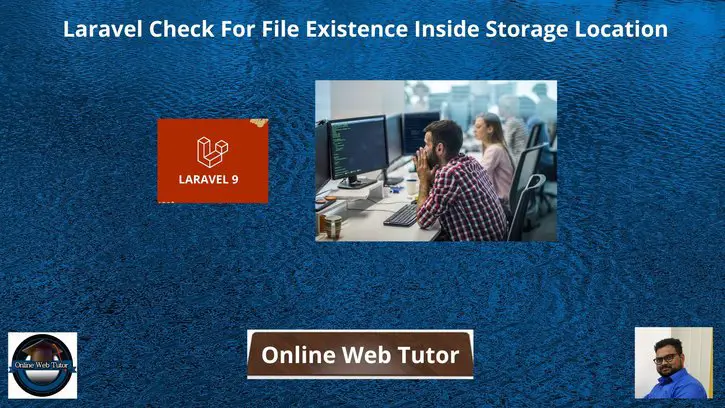Inside this article we will see the concept i.e Laravel Check For File Existence Inside Storage Location. Article contains the classified information about Checking file exists or not inside storage folder location.
If you are looking for a solution i.e How To Check File Exists in Storage location With Code then this article will help you a lot for this. Tutorial is super easy to understand and implement it in your code as well.
Read More: Laravel How To Enable and Disable Debug Mode Environment
Let’s get started.
Laravel Installation
Open terminal and run this command to create a laravel project.
composer create-project laravel/laravel myblogIt will create a project folder with name myblog inside your local system.
To start the development server of laravel –
php artisan serveURL: http://127.0.0.1:8000
Assuming laravel already installed inside your system.
Create Controller
Open project into terminal and run this command to create a controller file.
$ php artisan make:controller FileControllerIt will create a file FileController.php inside /app/Http/Controllers folder. Suppose you have a file sample.jpg a image file inside /storage/images folder of your application.
Open file and write this code into it.
<?php
namespace App\Http\Controllers;
use Illuminate\Http\Request;
use Illuminate\Support\Facades\Storage;
class FileController extends Controller
{
public function index()
{
if(Storage::exists('images/sample.jpg')) {
dd('Exists');
}else{
dd('Not Exists');
}
}
}
Read More: How To Work with Javascript Web Notification API Tutorial
Add Route
Open web.php from /routes folder. Add this route into it.
//...
Route::get('check-file',[FileController::class, 'index']);
//...
Application Testing
Run this command into project terminal to start development server,
php artisan serveURL: http://localhost:8000/check-file
Output
ExistsWe hope this article helped you to learn Laravel Check For File Existence Inside Storage Location Tutorial in a very detailed way.
Read More: How To Get Time Difference in Minutes in PHP Tutorial
If you liked this article, then please subscribe to our YouTube Channel for PHP & it’s framework, WordPress, Node Js video tutorials. You can also find us on Twitter and Facebook.
Read more